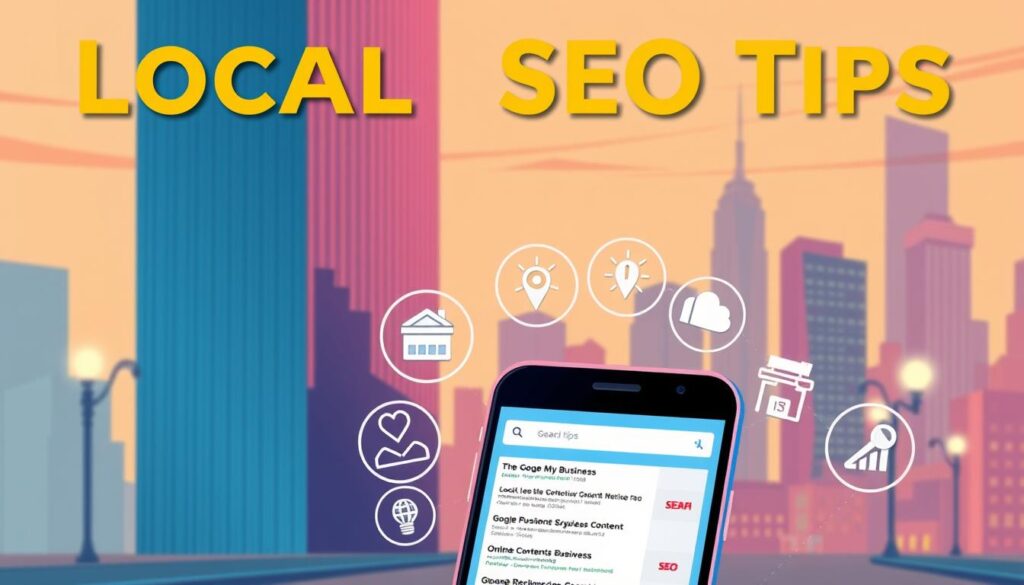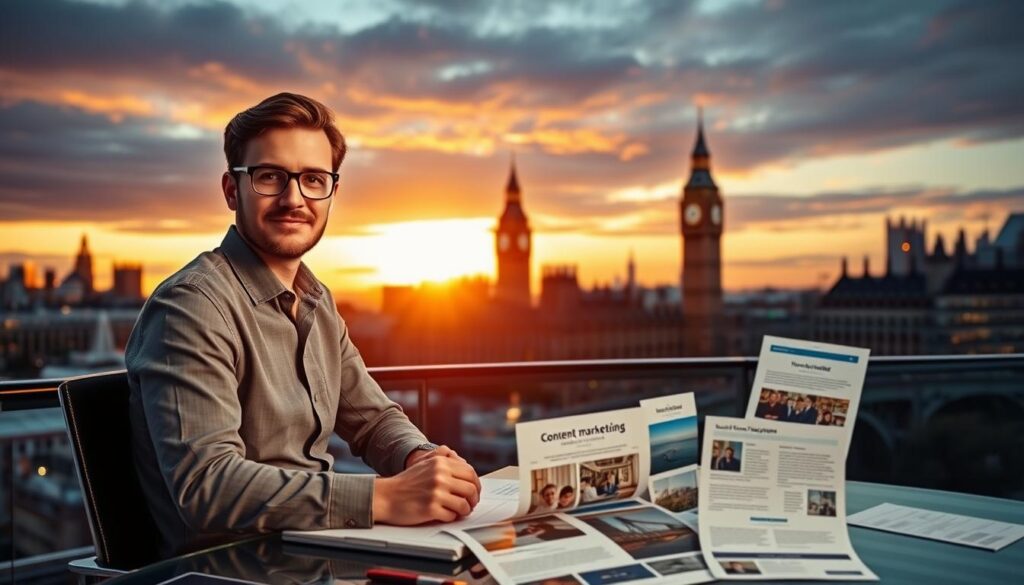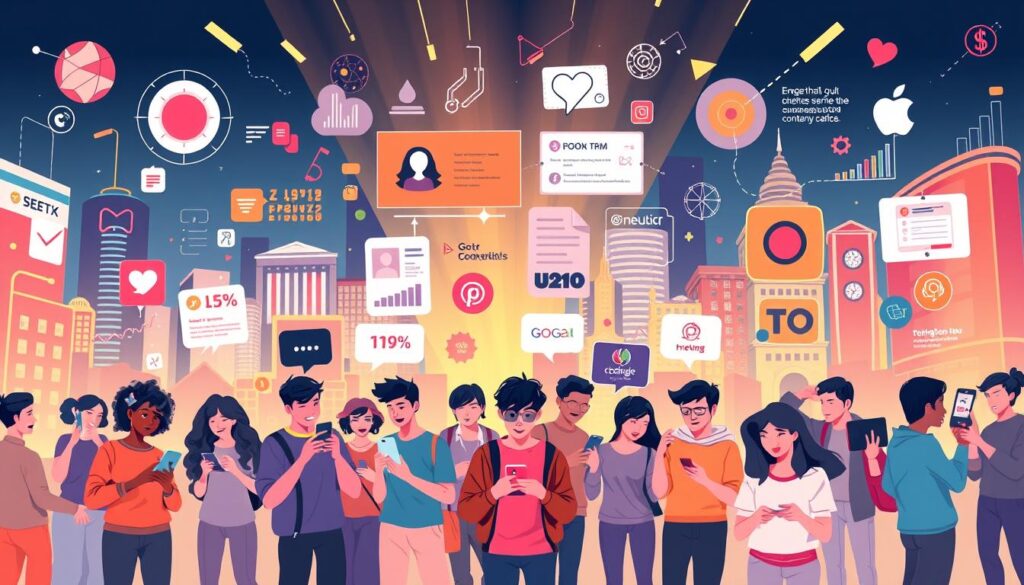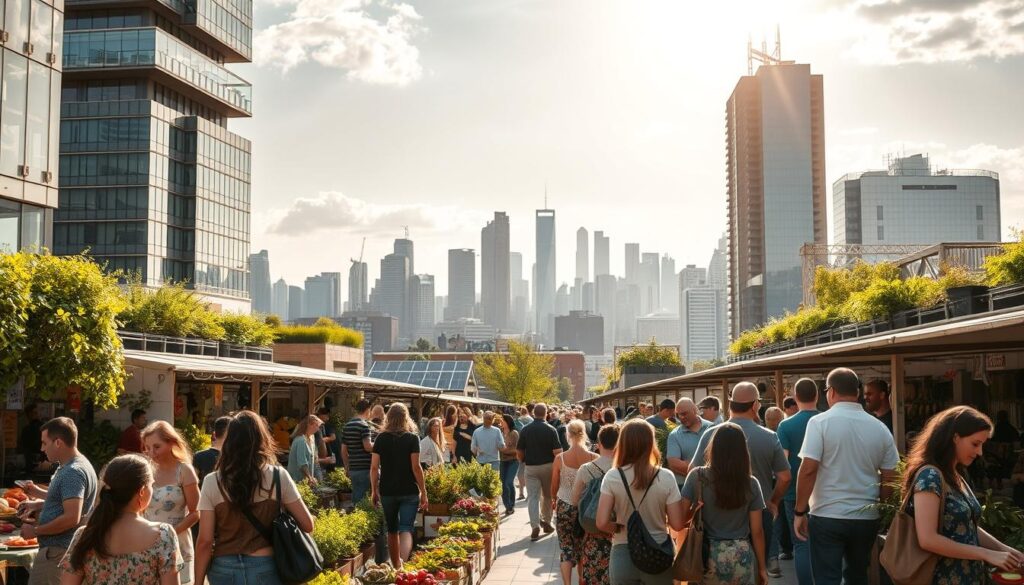Welcome to this comprehensive guide on transforming your travel agency’s online presence through effective social media advertising. In today’s digital age, social media has become a cornerstone for travel decisions, with platforms like Instagram, TikTok, and YouTube serving as vital discovery channels for potential customers.
Did you know that 87% of millennials turn to social networks for travel inspiration? This statistic underscores the importance of a robust social media strategy for your travel agency. By leveraging these platforms, you can significantly boost your visibility and drive higher conversion rates.
A strong social media presence is not just about posting updates; it’s about engaging with your audience, sharing captivating content, and building trust. Whether you’re a seasoned marketer or just starting out, this guide will walk you through the essential strategies to make your travel agency stand out in the competitive UK market.
In the following sections, we’ll explore topics such as creating compelling content, leveraging platforms effectively, and measuring the success of your campaigns. By the end of this guide, you’ll be equipped with the knowledge to elevate your travel agency’s social media presence and attract more customers than ever before.
Key Takeaways
- Understanding your target audience is crucial for effective social media advertising.
- High-quality, engaging content drives user interaction and brand loyalty.
- Utilising platform-specific features can significantly enhance your marketing efforts.
- Regular analytics monitoring helps refine your strategy for better results.
- Consistency is key to maintaining a strong online presence.
Understanding the Social Media Landscape for Travel Agencies
The social media landscape is evolving rapidly, offering travel agencies a dynamic environment to connect with their audience. Platforms like Facebook, Instagram, and TikTok have become essential for promoting destinations and engaging with customers. Each platform has unique features and audience demographics, making it crucial for agencies to tailor their strategies accordingly.
Major Platforms Overview
Facebook remains the most popular platform in the UK, with 44 million active users, making it ideal for detailed content and community building. Instagram, with its visual focus, attracts younger audiences, perfect for showcasing destinations through images and videos. TikTok, though newer, offers a creative space for short, engaging videos that can quickly go viral.
| Platform | Key Features | Audience Demographics | Strategy |
|---|---|---|---|
| Long-form posts, Groups, Marketplace | Wide age range, 44 million UK users | Community engagement, detailed travel guides | |
| Visual content, Stories, Reels | 71% under 35 | High-quality images, influencer collaborations | |
| TikTok | Short videos, trends, challenges | 17 million UK users, younger skew | Engaging, creative video content |
Platform-Specific Strategies
Visual content like images and videos drives engagement. Instagram Stories and Facebook Live sessions can provide real-time interactions, while TikTok’s short videos offer creative storytelling opportunities. For example, Hays Travel uses Facebook to share customer testimonials, fostering trust and engagement.
By understanding each platform’s strengths, travel agencies can craft strategies that resonate with their target audience, enhancing their online presence and driving customer engagement.
Discover more digital marketing strategiesto elevate your travel agency’s social media presence.
Defining Your Target Audience in the UK
Understanding your target audience is the cornerstone of any successful marketing strategy, especially for travel agencies. In the UK, demographics and customer preferences play a significant role in shaping how you approach your audience. By grasping these elements, you can tailor your content and strategies to resonate more effectively with potential customers.
Demographics and Customer Preferences
Research shows that age significantly influences travel preferences. For instance, under-30s often favour booking sites, while older demographics lean towards traditional travel agencies. This insight highlights the importance of tailoring your approach to different age groups. Younger audiences, for example, may respond better to visually engaging content on platforms like Instagram and TikTok, while older customers might appreciate detailed itineraries and personalized service.
Budget is another critical factor. Understanding the typical budget ranges of your audience can help you create more relevant offers. For instance, younger travellers might be drawn to affordable packages, whereas older customers may prioritize luxury and comfort. By aligning your content with these preferences, you can increase engagement and conversion rates.
Building Loyalty and Engagement
Building loyalty and engagement with your audience is about more than just attracting them—it’s about creating a lasting connection. Personalised communication is key; using customer data to craft tailored messages can significantly enhance their experience. For example, a family planning a summer holiday might appreciate a personalised package highlighting kid-friendly destinations.
Engagement thrives on interaction. Responding to comments and messages promptly and sharing user-generated content can foster trust and loyalty. Platforms like Instagram and Facebook offer features that allow direct interaction, making it easier to build a community around your brand.
By understanding your audience’s demographics and preferences, you can create targeted content that resonates deeply, leading to higher engagement and conversions. Remember, it’s all about delivering value that aligns with their needs and expectations.
how to advertise travel agency on social media
Advertising your travel agency on social media requires a strategic approach to maximize reach and engagement. With billions of active users on platforms like Facebook and Instagram, the potential for growth is immense. Let’s dive into how to set clear objectives and manage your budget effectively for optimal ROI.
Setting Clear Advertising Objectives
Before launching any campaign, define clear, measurable goals. Whether it’s boosting brand awareness or increasing bookings, having specific targets helps track progress. For instance, aiming for a 20% increase in bookings over three months can guide your strategy. Use SMART goals—Specific, Measurable, Achievable, Relevant, Time-bound—to ensure clarity and focus.
High-quality visuals are crucial. Ads with compelling images can boost engagement by up to 80%, while video ads can increase shares by 1200%. Carousel ads are great for showcasing multiple destinations, whereas static ads work well for promoting single offers.
Budget Considerations and ROI
Determining your budget involves balancing reach and cost. Allocate funds based on campaign goals. For example, awareness campaigns might require a larger budget, while conversion-focused ads may need more targeted spending. Use Facebook’s Audience Insights to refine targeting, enhancing ROI.
Monitor and adjust your budget regularly. Tools like Facebook Ads Manager provide insights into campaign performance. A/B testing can improve ad effectiveness by up to 30%, helping optimize elements like headlines and CTAs for better results.
| Ad Format | Best Use | Example |
|---|---|---|
| Static Image | Promoting single offers | Highlighting a special deal |
| Carousel | Featuring top travel packages | |
| Video | Storytelling and inspiration | Destination tours or customer testimonials |
For inspiration, consider successful campaigns like Selectour’s use of carousel ads for diverse destinations or Hays Travel’s video testimonials. These strategies not only engage users but also build trust and credibility.
Learn more about promoting your travel agency on social media with these 5 tips to enhance your strategy and drive results.
Content Creation Strategies for Travel Agencies
Creating compelling content is at the heart of any successful social media strategy for travel agencies. It’s about crafting narratives that inspire and engage your audience, driving them to take action. Whether it’s through destination guides or customer testimonials, your content should tell a story that resonates with your audience.
Destination Guides and Storytelling Techniques
Destination guides are a powerful way to showcase travel experiences. Use high-quality images and videos to bring destinations to life. Storytelling techniques can make your content more relatable. For example, share personal anecdotes or customer experiences to create an emotional connection. Videos, in particular, can capture the essence of a place, making your audience feel like they’re there.
User-Generated Content and Testimonials
User-generated content is a goldmine for authenticity. Encourage your customers to share their travel experiences and repost them on your platforms. Testimonials build trust and credibility, showing potential customers that your agency delivers on its promises. Consider running competitions or themed photo contests to incentivize sharing and increase engagement.
Learn more about promoting your travel agency and discover how to choose the right digital marketing agency to enhance your content strategy.
Effective Use of Visuals on Social Platforms
Visual content is the backbone of successful social media marketing for travel agencies. Platforms like Instagram and Facebook thrive on high-quality images and videos, making them essential tools for capturing your audience’s attention. In this section, we’ll explore how to leverage photography, video tours, and editing techniques to elevate your social media presence.
Photography, Video Tours and Editing Tips
High-quality photography and video tours are essential for showcasing destinations effectively. Use bright, vibrant images that highlight the beauty of the locations you offer. Video tours, on the other hand, provide an immersive experience, allowing potential customers to explore places virtually.
When editing your visuals, keep it simple yet impactful. Use filters and effects that enhance the natural beauty of your images without overwhelming them. Tools like Adobe Lightroom and Canva offer user-friendly options for creating professional-looking content.
| Content Type | Best Use | Example |
|---|---|---|
| High-Quality Images | Showcasing destinations | Stunning beach landscapes |
| Video Tours | Providing an immersive experience | Virtual walk-throughs of hotels |
| Edited Visuals | Enhancing appeal | Applying filters for consistency |
Brands like National Geographic and Lonely Planet excel at using visuals to engage their audience. They combine striking imagery with compelling storytelling to create posts that resonate deeply with their followers. By integrating your visuals with textual content, you can create balanced, engaging stories that capture your audience’s imagination.
Leveraging Influencer Partnerships and Collaborations
Collaborating with influencers can be a game-changer for your travel business. It’s about aligning with voices that resonate with your audience and amplify your brand’s message. This strategy not only boosts credibility but also opens doors to new customer segments.
Identifying the Right Local Influencers
When selecting influencers, focus on those whose audience mirrors your target market. For instance, a family-friendly travel agency might partner with parenting influencers. Look for engagement rates over follower counts, as micro-influencers often deliver higher interaction. Tools like Lionize can help identify the perfect fit for your brand.
Local influencers, in particular, can add authenticity. They can highlight hidden gems, making your content more relatable. Visit Britain’s campaign, which used local influencers to promote lesser-known attractions, is a great example of this approach.
Measuring Engagement and Success
Tracking metrics like engagement rates and conversions is crucial. Compare these against your campaign goals to gauge success. For instance, if your aim was to increase brand awareness, look at reach and impressions. Tools like Instagram Insights can provide valuable data.
Long-term partnerships often yield better results. Consistent collaborations build trust and keep your audience engaged. Many marketers are now focusing on these lasting relationships to enhance authenticity and brand loyalty.
Discover how to select the right influencers and elevate your marketing strategy with these proven techniques.
Optimising Posts with Hashtags and SEO on Social Media
Optimising your social media posts with the right keywords and hashtags can significantly enhance your travel agency’s visibility and engagement. This section will guide you on how to effectively integrate SEO strategies into your social media content to reach a wider audience and drive more bookings.
Integrating Keywords and Hashtags Effectively
Start by researching keywords and hashtags that resonate with your target audience. Tools like Google Keyword Planner or Hashtagify can help identify trending and relevant terms. For example, using keywords like “travel agency” or “destination guides” can help your content rank higher in searches.
Naturally incorporate these keywords into your captions and descriptions. Avoid overloading your posts with too many hashtags; stick to a maximum of five on Instagram and two on Facebook for optimal engagement.
Step-by-Step Optimisation Guidance
Begin by auditing your social media profiles. Ensure your bio includes relevant keywords and a clear call-to-action. For instance, “Follow us for exclusive travel deals and destination tips!”
When creating posts, focus on high-quality visuals and captions that tell a story. Use hashtags strategically to categorise your content, making it easier for users to find your posts. For example, a post about a family-friendly resort could use hashtags like #FamilyTravel or #HolidayDeals.
Practical Tips for Better Searchability
Use platform-specific features like Instagram Stories or Facebook Live to boost engagement. Share user-generated content to build trust and credibility with potential customers. For example, reposting a customer’s photo of a destination you offer can create an authentic connection with your audience.
Monitor your analytics regularly to understand what works best for your audience. Adjust your strategy based on engagement rates and conversions to continuously improve your results.
| Platform | Hashtag Strategy | Example |
|---|---|---|
| Use 3-5 relevant hashtags | #TravelInspiration, #Wanderlust | |
| Use 1-2 specific hashtags | #TravelDeals | |
| TikTok | Use trending hashtags | #TravelTok, #AdventureAwaits |
By following these tips and consistently optimising your posts, you can improve your travel agency’s online presence and attract more customers. Remember, the key is to stay consistent and keep your content engaging and relevant to your audience.
Scheduling and Consistency in Posting
Consistent posting is vital for keeping your audience engaged and interested in your travel agency. Irregular posting can lead to missed opportunities and a disengaged audience. To maintain a strong online presence, consider scheduling your posts in advance using social media management tools like SocialPilot.
Utilising Social Media Management Tools
These tools allow you to plan and schedule content across multiple platforms, ensuring your agency maintains a steady presence. They also enable you to post at peak engagement times, even when you’re unavailable. For example, you can schedule posts for early evenings or weekends when your audience is more active.
Planning your content calendar in advance helps you stay organised and ensures a balanced mix of promotional, educational, and engaging posts. Recycling evergreen content, such as popular destination guides, can save time and keep your feed fresh without constant creation.
| Platform | Optimal Posting Times | Content Type |
|---|---|---|
| 5:00 PM – 7:00 PM | High-quality images, Stories | |
| 12:00 PM – 3:00 PM | Destination guides, videos | |
| TikTok | 7:00 PM – 10:00 PM | Short videos, trends |
By scheduling consistently, your travel agency can build trust and loyalty, keeping your audience engaged and informed about your services and destinations.
Discover how to select the right digital marketing agency to enhance your scheduling and content strategy.
Analysing Social Media Performance Metrics
Understanding how your social media efforts are performing is key to refining your strategy and achieving your goals. By regularly reviewing your analytics, you can gain insights into what works and what doesn’t, helping you make data-driven decisions.
Tracking Engagement and Conversion Rates
Key performance indicators (KPIs) such as engagement rates, conversion rates, and click-through rates (CTR) are essential metrics to monitor. Engagement rate, calculated by dividing total likes, comments, and shares by your follower count, shows how well your content resonates with your audience. Conversion rates indicate how many users complete desired actions, like booking a trip or signing up for a newsletter.
| Metric | Description | Importance |
|---|---|---|
| Engagement Rate | Measures audience interaction with your content. | Indicates content effectiveness and audience connection. |
| Conversion Rate | Tracks completed actions like bookings or sign-ups. | Directly ties to business goals and ROI. |
| Click-Through Rate (CTR) | Percentage of users clicking on your links. | Reflects how well your content drives traffic to your website. |
Adjusting Your Strategy with Analytics
Use analytics tools like Facebook Insights or Instagram Analytics to track performance. If your engagement is low, consider refining your content or adjusting posting times. For example, a UK-based travel agency saw a 15% increase in bookings after shifting their focus to video content based on their analytics.
Learning from Case Studies
Case studies offer valuable lessons. Many travel agencies have successfully adjusted their strategies by identifying top-performing content and reallocating their budget to high-impact campaigns. Regular reporting helps maintain continuous improvement and alignment with business objectives.
Conclusion
In conclusion, a well-crafted social media strategy is essential for any travel agency aiming to thrive in the UK market. By focusing on high-quality content, platform-specific approaches, and consistent engagement, you can significantly boost your visibility and drive bookings. Remember, understanding your audience and staying adaptable to trends is key to long-term success.
Regularly monitor your performance metrics to refine your approach and ensure your strategy evolves with the digital landscape. Don’t hesitate to explore new trends and tools to keep your agency ahead of the competition. With the right plan and continuous effort, you can turn your social media presence into a powerful tool for attracting and retaining customers.
Start implementing these tips today and watch your travel agency’s online impact grow. Happy strategising!
FAQ
How can I effectively use Instagram Stories for my travel agency?
Use Instagram Stories to share behind-the-scenes content, sneak peeks of destinations, and exclusive offers. Engage your audience with polls and quizzes to boost interaction and visibility.
What’s the best way to encourage user-generated content for my agency?
Encourage customers to share their travel experiences by offering incentives like discounts or feature opportunities. Use branded hashtags to make user content easily discoverable and showcase it on your social media platforms.
How do I measure the success of my social media campaigns?
Track key metrics such as engagement rates, website traffic, and conversion rates. Use analytics tools to monitor how your content performs and adjust your strategy based on the data to optimise future campaigns.
What’s the best time to post on social media for maximum engagement?
Post when your audience is most active, typically during lunch breaks or early evenings. Experiment with different times to find what works best for your specific audience and adjust your schedule accordingly.
How should I handle negative feedback on my social media pages?
Respond promptly and professionally to negative comments. Show empathy and offer solutions to resolve issues. This approach can turn a negative experience into a positive one and demonstrate good customer service to your audience.










